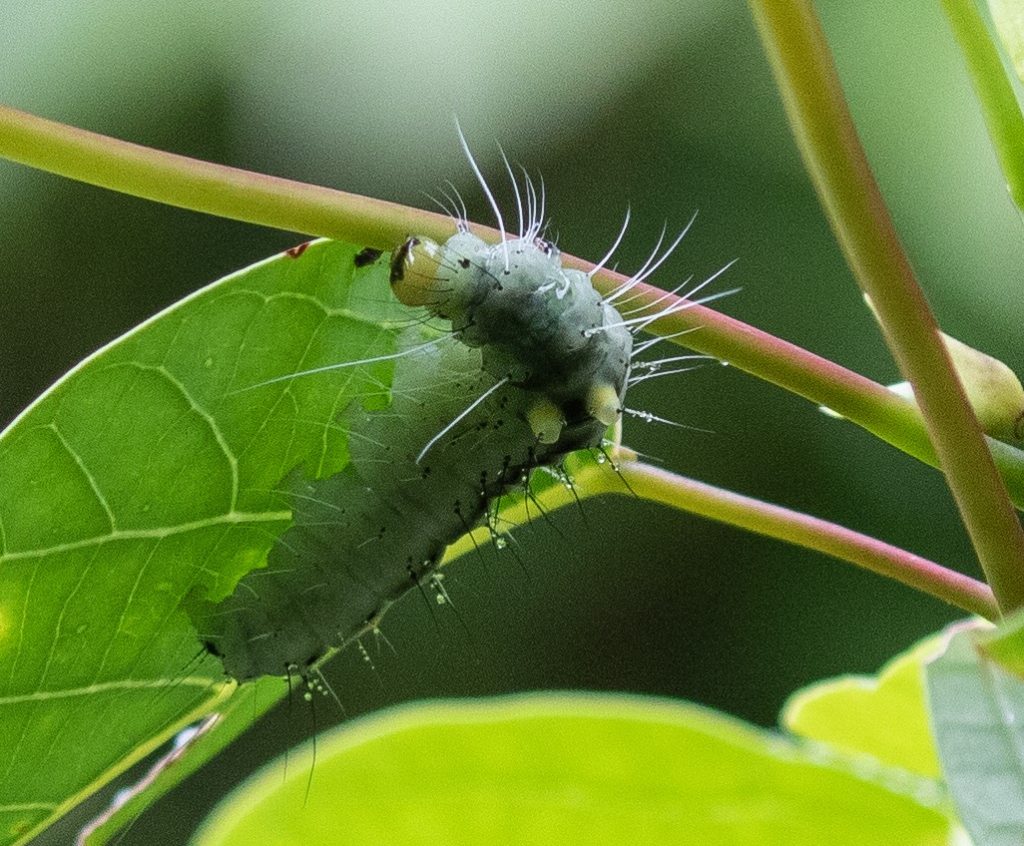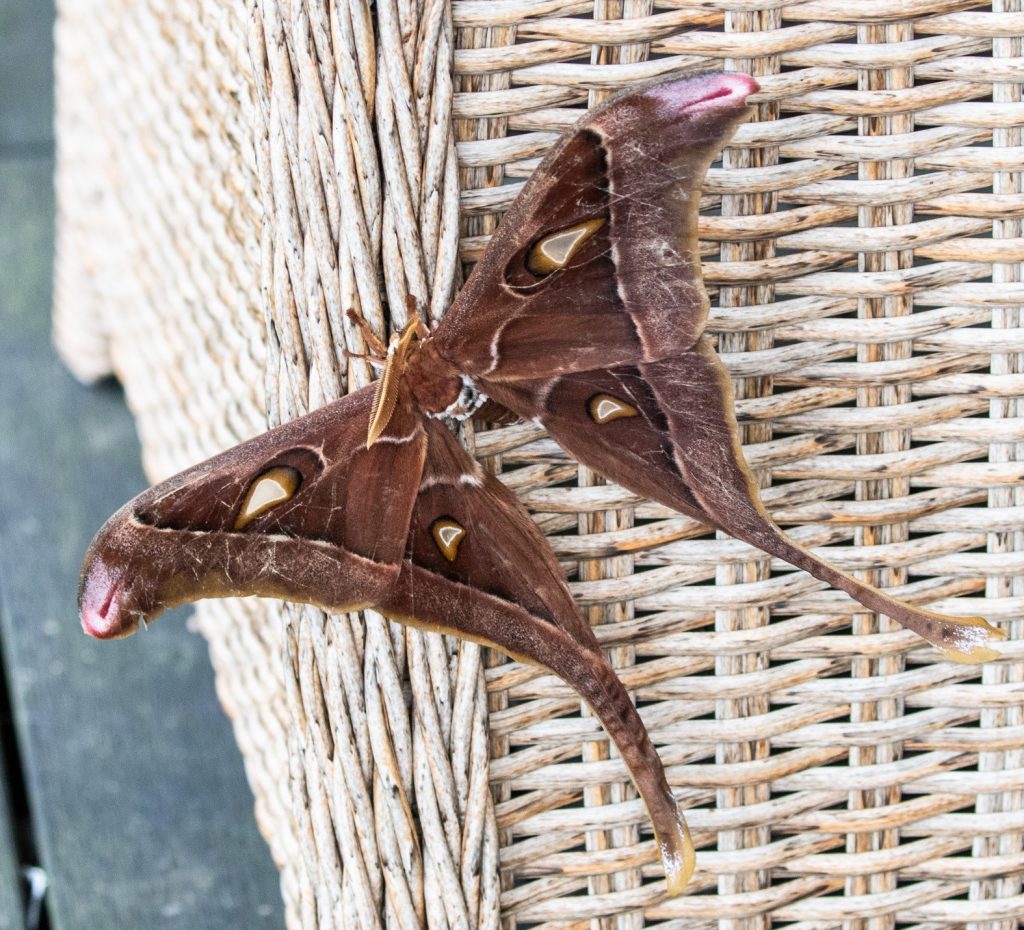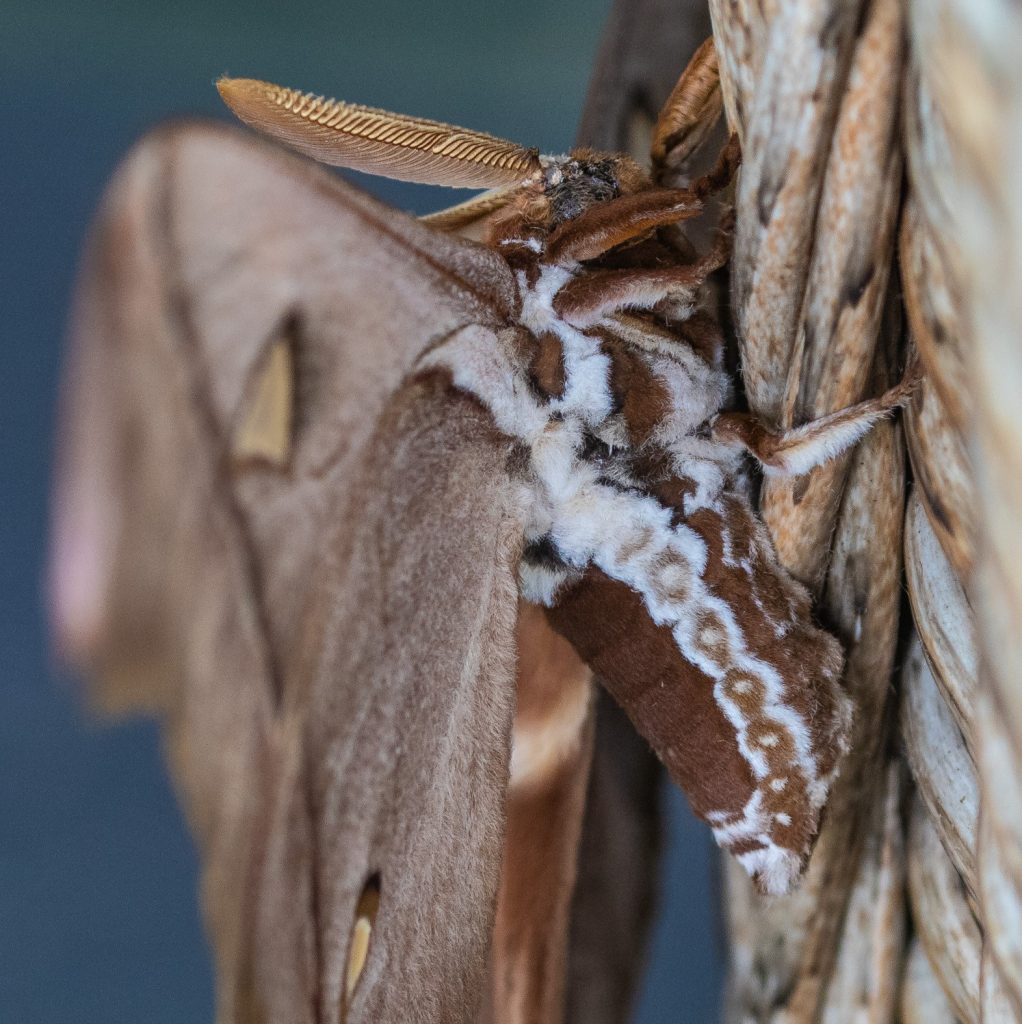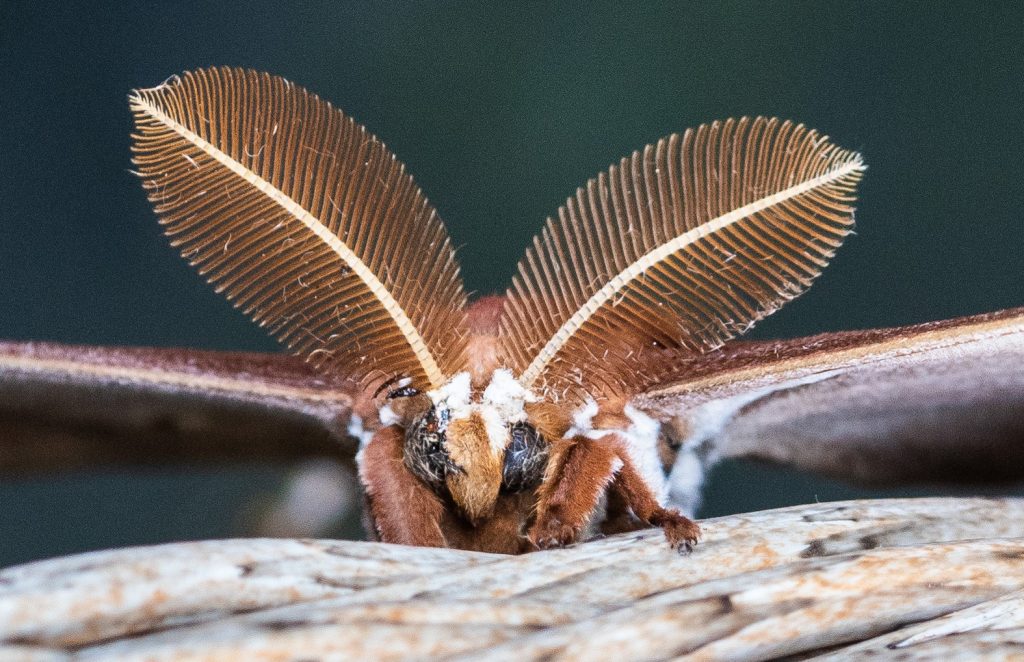Came out on the verandah in downtown Paluma this morning to find a giant of the jungle sitting quietly on the deck furniture.
Male (we think) Hercules moth (Coscinocera hercules) 240mm wingtip to wingtip, 180mm overall length. … that’s very big for a male as Wildlife of Tropical Northern Queensland lists maximum size for the larger female as 225mm.
Wildlife of Tropical Northern Queensland and Guide to Australian Moths say range is Cape York south to Ingham — so the southerly extent of the range is a bit understated in both books.
The females have the largest wing area of any moth in the world.
The leaves of the medium sized rainforest tree Bleeding Heart (Homalanthus novoguineensis) is said to be the favorite food of the Hercules caterpillars.
We have a Bleeding Heart which is trying to climb onto our deck.

The leaves are being well munched and we did find a caterpillar there after we spotted the moth. However, it didn’t look like the Hercules caterpillars from the books.
Jamie Oliver has come across this caterpillar before and was able to provide an ID — Iscadia inexacta (Walker). Iscadia and Hercules share a preference for Bleeding Heart.
According to the Butterfly House website Iscadia has a great party trick — “The caterpillar pupates in a papery cocoon covered in bits of chewed leaf. The pupa is famous for being able to produce sounds when disturbed, by rubbing projections on the abdominal skin against the hind surface of the cocoon.”
Hercules also has a surprising twist of biology — the adult moths don’t eat, they survive on food stores from when they were caterpillars, says the Australian Butterfly Sanctuary website. The adults live for only 10-14 days which they devote to finding a mate. The mating game is initiated by the female which emits a pheromone that can attract male suitors from over 2km away.
The caterpillars grow up to 12cm in length and are dotted with yellow spikes. Such a huge caterpillar makes sense when we consider how large the moth itself is.
The largest ever Hercules Moth had a wingspan of 36cm, says the Australian Butterfly Sanctuary website.
Text and photos by Peter Cooke




I just mentioned the Hercules moth to Bill and Linda Venn when they stayed with us in Toowoomba this past weekend. The first time I saw one in Paluma was one evening in about 1983/4 and it was flying up the road from the Old Community Hall to the Paluma EEC and then fell to the ground in front of a group of students returning from their night walk. Initially we thought it was a bat until a closet look. It was an amazing and memorable experience that I’ll never forget
Love the referencing!! It’s always great to know where information comes from, thanks Peter. And lucky you!
Thank you Peter, very interesting & wonderful photos as usual.
What a find! The late Roy Mackay said that twenty-odd years ago these amazing moths were commonly seen. I have seen only two in the 13 years I have lived in Paluma. There are plenty of Homolanthus novoguinensis trees around so the seeming decline of the Hercules moth here is rather a mystery.